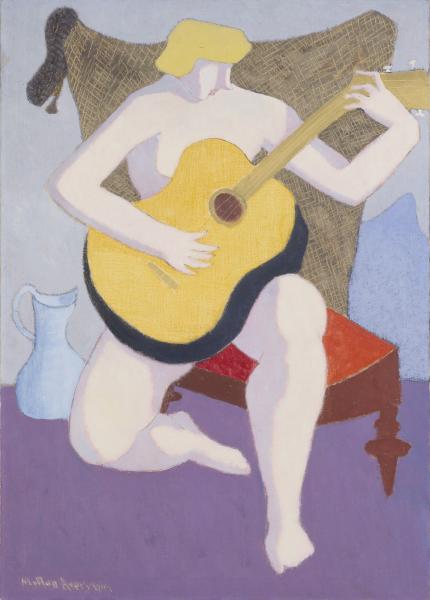Minnie Evans, Untitled (Head Flanked by Angels above Sunset), 1970, colored pencil on paper
Smithsonian American Art Museum, Gift of Chuck and Jan Rosenak and museum purchase through the Luisita L. and Franz H. Denghausen Endowment, 1997.124.109
“You were a domestic servant when you made these.
"Draw or die," said a dream.
A symmetrical thing measures itself
according to itself. Shoulders make a vase.
Wings have their own faces. Life-forms
share surfaces and rally into medallions.
Because of the admonition-
which didn't say, "Draw and live."”
--Excerpt from “Outsider: Minnie Evans” by Sandra McPherson
Minnie Evans was a free-associative artist, and a folk artist.
Symmetry, large eyes, and feminine-androgynous figures were common elements of her work. It represents a transitive nature; God sees through these enlarged eyes, and thus, all life, and all people, are each other at different stages. The feminine can be the same as the masculine, but staged at a different point in time.
Evans’s art is often explained in the same breath as Nina Howell Starr’s curation of it. There was a concentrated effort from Evans to create art, as there was for Starr to have Evans received as an artist. Starr advocated for Evans to be evaluated as a free-associative artist as white male contemporaries would have, explaining that the unconscious has continuously been a powerful source of inspiration and drive for successful artists.

